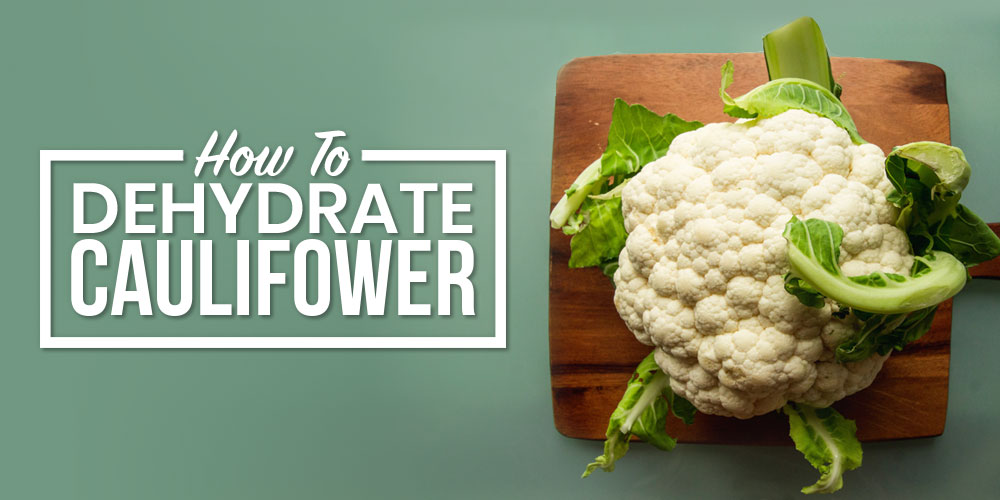
NAVIGATION
I love fresh fruits and vegetables, but it can be discouraging to throw out spoiled food when I don’t get around to eating it in time. I needed to find a simple solution to prolong the shelf life, and dehydrating fits the bill.
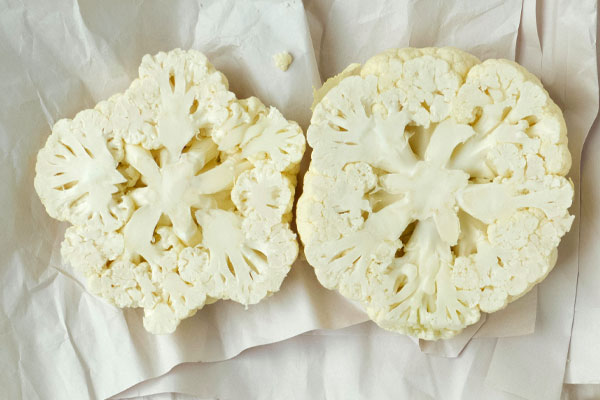 Dehydrating vegetables is just one of the many food preservation methods I’ve discovered through homesteading. The simple process has saved me money and helped me reduce waste. Plus, I’ve found that I’m more likely to include vegetables in recipes when I have them on hand, and I discovered that dried cauliflower can be used in any recipe that calls for fresh cauliflower. Keeping a fully stocked fridge is nearly impossible, but the pantry is much more forgiving.
Dehydrating vegetables is just one of the many food preservation methods I’ve discovered through homesteading. The simple process has saved me money and helped me reduce waste. Plus, I’ve found that I’m more likely to include vegetables in recipes when I have them on hand, and I discovered that dried cauliflower can be used in any recipe that calls for fresh cauliflower. Keeping a fully stocked fridge is nearly impossible, but the pantry is much more forgiving.
I’ll share everything I’ve learned about dehydrating cauliflower so you, too, can have this veggie on hand throughout the year.

Hi, I’m Ryan
I’ve been hesitant to grow cauliflower without a sustainable way to preserve it, but now that I’ve started dehydrating, this solution allows me the freedom to grow as much as I want. Dehydrating cauliflower is a straightforward process and cuts out unnecessary food waste.

Can You Dehydrate Cauliflower?

Cauliflower is one of many vegetables that keep well after being dehydrated. By reducing cauliflower’s 92% water content to below 25%, it will remain shelf stable for months and be available whenever you need it.
If you’re just getting started dehydrating your own food or are new at dehydrating cauliflower, here’s a step-by-step guide so you can avoid trial and error and quickly get the job done.
What Varieties Of Cauliflower Can Be Dehydrated?
Some of the most accessible varieties to grow include Snow Crown, Amazing, Denali, and Self Blanching (all white), but there are also colorful cauliflower varieties like Depurple Hybrid and Cheddar Hybrid if you’d like to try your hand at growing something unique.
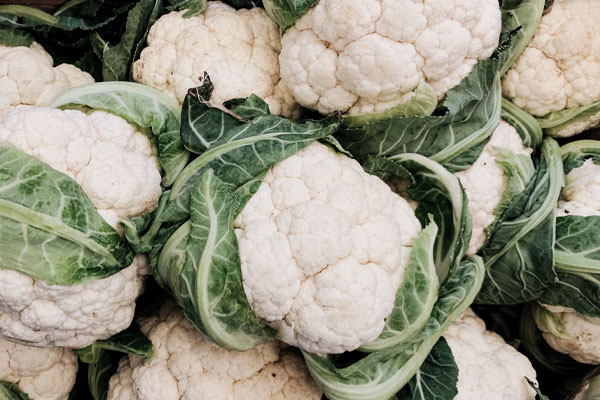
What Parts Of The Cauliflower Can Be Dehydrated?
Both the stem and florets (and the even stem leaves!) are edible on a head of cauliflower. You can dehydrate any or all of these parts, depending on how you plan to use them.
For example, I sometimes chop up the stem, dehydrate it along with the florets, and store it separately to use to enrich the flavor of homemade broths and soups.
Do I Need To Peel Cauliflower To Dehydrate It?
Yes, I choose to peel the first layer or two of the cauliflower stem since it tends to be harsh and bitter.
Once those outer layers are removed, I chop up the tender stem and dehydrate it along with the florets.
Do I Need To Blanch Cauliflower To Dehydrate It?
Blanching cauliflower before dehydrating isn’t necessary, but I recommend it.
It will keep the color vibrant, regardless of your chosen variety, which is nice if you like to have a bunch of different colors in the meals you’re making. It also softens the tough fibers slightly to make the cauliflower dry faster, and it kills any bacteria that may remain on the surface after you’ve rinsed it.
How To Dehydrate Cauliflower

When learning how to dry cauliflower, I really just familiarized myself with my dehydrator, and then it was a matter of learning the correct times and temperatures.
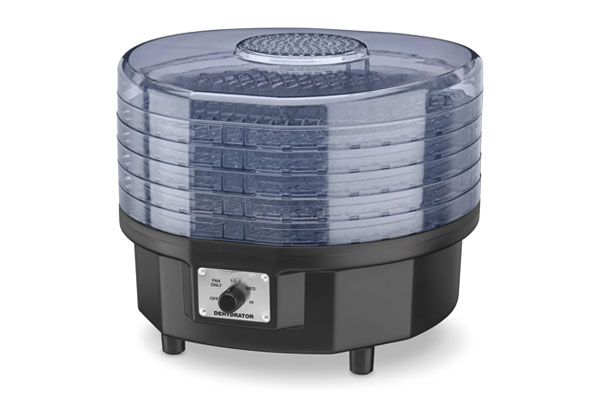
Dehydrating truly is the simplest food preservation method for beginners and an easy way to begin homesteading.
Equipment You’ll Need To Dehydrate Cauliflower

As I’ve gone deeper down the rabbit hole of dehydrating my own food, I’ve learned which items are must-haves and which ones are just nice to have.
A blanching basket or slotted spoon can also be handy for removing cauliflower from the cooking pot quickly so it doesn’t get mushy.
Equipment For Dehydrating Cauliflower
- Food dehydrator
- Glass jars for storage
- Cooking pot
- Sharp knife
- Cutting board
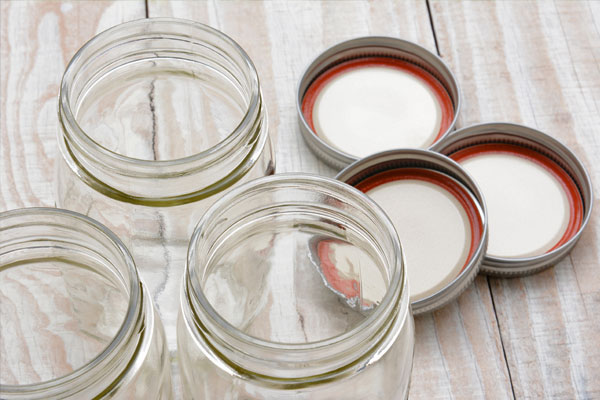
Steps To Dehydrating Cauliflower

Using a dehydrator is simple enough. The parts are few, and the settings are easy to understand. All you really have to know is how long and at what temperature to dehydrate cauliflower, and you’re ready to begin.
Steps How To Dehydrating Cauliflower
- Chop The Cauliflower
Ideally, you want uniform, bite-size pieces so the cauliflower will dehydrate evenly. You don’t have to worry about creating perfect intact florets since the stems and florets will be mixed well in the storage jars. - BlanchBlanching helps retain flavor, texture, and color. It also kills harmful organisms and removes any hard-to-reach dirt. To blanch cauliflower, submerge it in boiling water for 3-4 minutes (5 at higher altitudes).
- Add Cauliflower To Dehydrator
Arrange cauliflower pieces on the trays in a single layer, evenly spaced to allow for proper airflow. - Set And Run The DehydratorThe optimal temperature to dehydrate cauliflower is 140 F. Once it’s set, you will run the dehydrator constantly for 12-15 hours, checking its progress every 3-4 hours.
- Condition CauliflowerFill glass jars about halfway with dried cauliflower and place the lid on fingertip tight (using just the force of your fingertips to avoid putting it on too tight).
 I use the same Mason jars that I’ll use to store the dehydrated cauliflower. Monitor the jars for about seven days to see if any moisture appears. Over the next week, shake and turn the jars gently to move the dried cauliflower around, looking for signs of moisture. This isn’t generally a problem, but I’ve had it happen when I didn’t chop all the pieces uniformly, so they didn’t dehydrate consistently.If moisture appears inside any of the jars, put the contents of that jar back in the dehydrator for 3-4 hours.
I use the same Mason jars that I’ll use to store the dehydrated cauliflower. Monitor the jars for about seven days to see if any moisture appears. Over the next week, shake and turn the jars gently to move the dried cauliflower around, looking for signs of moisture. This isn’t generally a problem, but I’ve had it happen when I didn’t chop all the pieces uniformly, so they didn’t dehydrate consistently.If moisture appears inside any of the jars, put the contents of that jar back in the dehydrator for 3-4 hours. - Store The CauliflowerAfter conditioning, fill jars the rest of the way up and label them with the contents and date. Store them in a cool, dry area away from direct sunlight. I find my pantry is the perfect place to store dehydrated fruits and vegetables.
How Do You Tell When Your Cauliflower Is Done Dehydrating?
The first 10 or so hours of the dehydrating process are pretty uneventful, but towards hour 12, I usually notice that my cauliflower starts to look crispy, maybe even a little scorched. That’s a sure sign it’s done.
As I mentioned before, I also condition the cauliflower before storing it away. During this seven-day process, I keep an eye on the jars to make sure there isn’t any condensation inside, which would lead to mold and spoilage.
Can You Use An Oven Instead Of A Dehydrator For Cauliflower
It’s not my number one choice, but using your oven to dry any food, including cauliflower, is perfectly fine.
Your oven needs to have a low setting of 140 F so the cauliflower will dry slowly instead of roasting it at a higher temperature. However, I’ve found dehydrating cauliflower in the oven to be burdensome because it takes double the time it would take in a dehydrator.
How To Store Dehydrated Cauliflower

Once you have mastered drying cauliflower, the next most important skill is learning how to store it for maximum shelf life. I recommend putting your dried cauliflower in a glass jar, like a Mason jar or similar that you might have on hand, or a moisture-proof plastic container so there’s no chance that it will get ruined after all your (and your dehydrator’s) hard work.
How Long Will Dehydrated Cauliflower Last
A major benefit of dried vegetables is their extended shelf life. Unlike canned vegetables, you can open a jar of dried cauliflower, take only what you need, and store the rest for later.
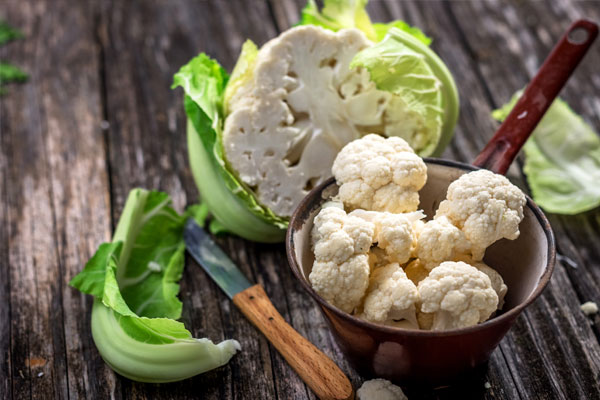
How To Use Dehydrated Cauliflower In Your Cooking

There are actually a few ways to use dehydrated cauliflower as is! For example, I love eating cauliflower popcorn. I just sprinkle popcorn seasoning onto dried cauliflower and enjoy a quick, guilt-free snack!
You can also grind dried cauliflower to a flour consistency and use it for baking or as breading. This is an excellent option if you follow a gluten-free, low-carb, grain-free, or paleo diet.
Fresh To Dehydrated Cauliflower Conversion
One cup of fresh cauliflower will yield about ¼ cup of dried. And remember, this works in reverse, so be mindful of how much you begin with when rehydrating to avoid wasting any.
I’m usually able to fit 2-3 cups of fresh cauliflower on each tray of the dehydrator, resulting in ½ to ¾ a cup of dried cauliflower per tray.
How To Re-Hydrate Dehydrated Cauliflower
The simplest way to rehydrate dried cauliflower is to add 1 to 1½ cups of extra liquid to soups and stews along with the dehydrated cauliflower. Then, your cauliflower will be rehydrated by the time the dish is done.
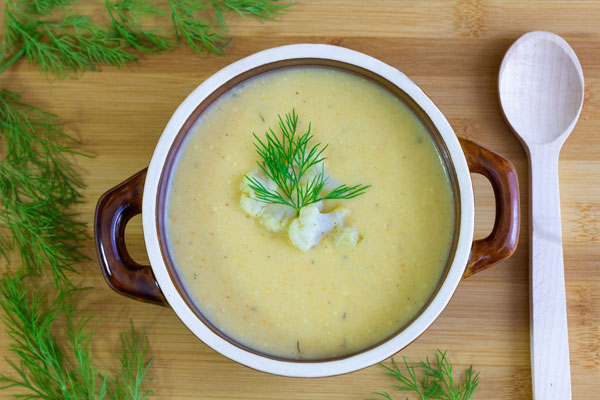 If your dish doesn’t have a lot of water or liquid in it, you’ll need to rehydrate the cauliflower separately by adding it to a bowl with hot water for 15-30 minutes.
If your dish doesn’t have a lot of water or liquid in it, you’ll need to rehydrate the cauliflower separately by adding it to a bowl with hot water for 15-30 minutes.
Drying fresh fruits and vegetables is an easy way to cut grocery costs over time and always have a variety of foods on hand, which is very helpful whether you’re a seasoned cook or a beginner in the kitchen! If you have the storage space and you find you have an abundance of vegetables from your garden or market, there really aren’t any disadvantages to dehydrating, and it’s a sustainable habit for you and your family.
Your Turn!
- What’s your favorite recipe that you’ll make with dehydrated cauliflower?
- Will knowing how to dry cauliflower help you incorporate it into more meals?



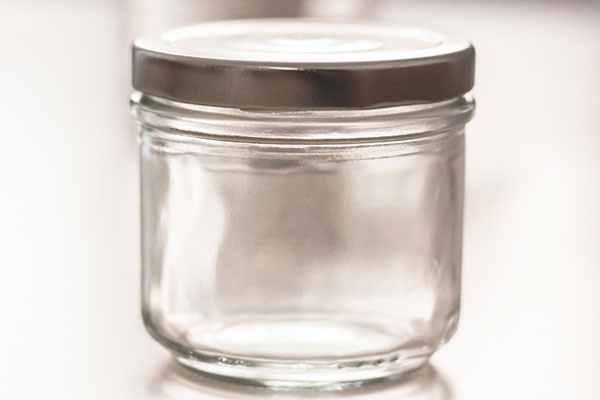 I use the same Mason jars that I’ll use to store the dehydrated cauliflower. Monitor the jars for about seven days to see if any moisture appears. Over the next week, shake and turn the jars gently to move the dried cauliflower around, looking for signs of moisture. This isn’t generally a problem, but I’ve had it happen when I didn’t chop all the pieces uniformly, so they didn’t dehydrate consistently.If moisture appears inside any of the jars, put the contents of that jar back in the dehydrator for 3-4 hours.
I use the same Mason jars that I’ll use to store the dehydrated cauliflower. Monitor the jars for about seven days to see if any moisture appears. Over the next week, shake and turn the jars gently to move the dried cauliflower around, looking for signs of moisture. This isn’t generally a problem, but I’ve had it happen when I didn’t chop all the pieces uniformly, so they didn’t dehydrate consistently.If moisture appears inside any of the jars, put the contents of that jar back in the dehydrator for 3-4 hours.
Leave a Reply